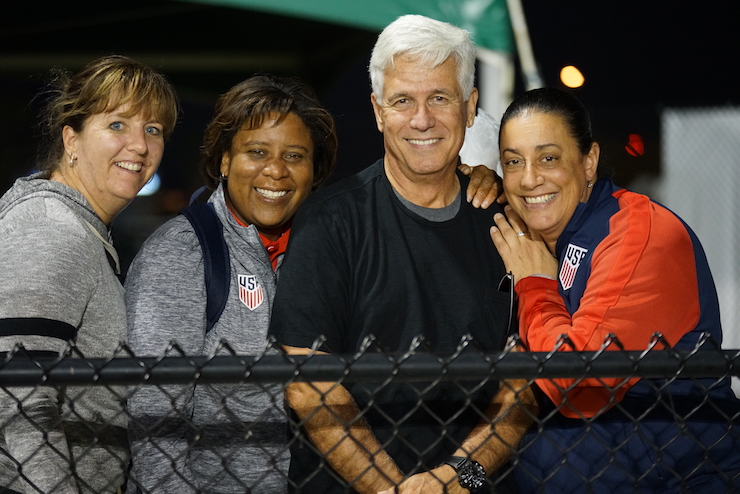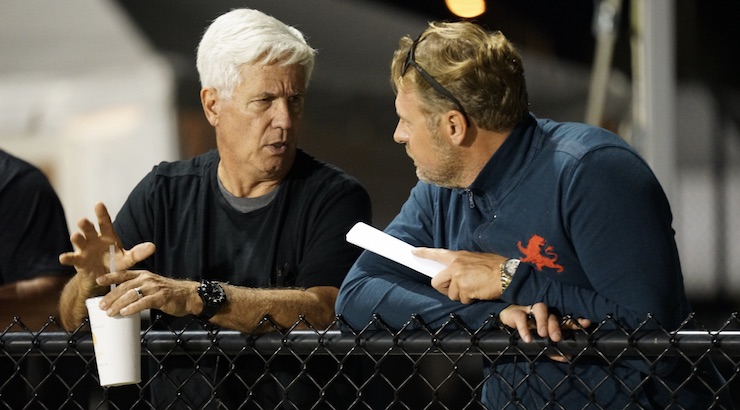Former Technical Director for US Youth Soccer Sam Snow on What is Working and What Needs to Change in Youth Soccer Today
American youth soccer is divided into many leagues, associates, and organizations. In a county with a population of more than 323 million people living on a land that is 3.797 million mi² — obviously, we want choices.
In this chaotic youth soccer landscape — and, in a country where soccer is not the single dominating sport, US Youth Soccer is the largest youth sports organization in America. And, that says a lot.
Sam Snow, one of the most respected people in the industry, is the former Technical Director for US Youth Soccer and works tirelessly to help promote coaching education and raise the level of the game across the 55 State Associations in America.
A coach to the top coaches, Snow holds a U.S. Soccer Federation “A” Licensee and is a passionate soccer lover who has worked in national, collegiate and youth soccer.

While all of us seem to recognize the desire for change, few of us have clear recommendations for helping get our country to the next level.
SoccerToday’s Diane Scavuzzo interviewed Sam Snow on the future of youth soccer in America, specifically on what we need to do differently if we want to accomplish our goals of playing on the world stage.
Diane Scavuzzo: What is right and what is wrong in American youth soccer?
Sam Snow: There is more right with soccer in our country than not. I began my journey in the game in 1970. Over the decades since, I have seen the numbers of players, coaches and referees grow into the millions.
We have fantastic facilities, new soccer clubs, high school teams, college programs and professional leagues. We participate competitively at the international level. We have grown through the sports media treating the game with derision to admiration.
In surveys on youth sports, soccer is always in the top four. For those who have recently moved to our country, soccer helps with the melting pot process.
Soccer is a part of the mainstream in America. For many Americans, soccer is truly a lifelong affair.

Diane Scavuzzo: What is wrong in youth soccer?
Sam Snow: Not much. Some of our challenges are the same as every other sport in our nation. The big four – baseball, basketball, football and soccer – all show a decline in participation as children today are opting out of sports.
All Americans must work to get young people active once again.
For a game plan on how to accomplish that goal, I recommend to SoccerToday readers to read Project Play from The Aspen Institute and Designed to Move from Nike. We have rested on our laurels.
Here is a link to the Aspen Institute FINAL Report
It is time to grow the game again – can we hit the 7,000,000 mark over the next decade?
Another challenge to be addressed is too much short-term thinking (closed mindset) by too many adults associated with youth soccer.
No group of adults are guiltless.
All of us, be it the coaches, referees, parents of players, administrators, sports media, etc are guilty. Some adults are guilty of a win at any cost and peak by Friday mentality. Others have failed to curtail those actions when seen in others. We all must be patient and accept that to grow deeper in the game takes time.
Soccer is a long-term developmental sport.

Diane Scavuzzo: What do we need to do?
Sam Snow: These are the changes we need to make:
- We need to put parent engagement — education — at the top of the ‘to do list’ for all 6000 youth soccer clubs in the country.
- We need to make certification of coaches a mandatory requirement for all 400,000 coaches involved with youth soccer.
- We need technical staff and spectators to lay off the referees at youth games so that we can stem the attrition rate in those ranks. We will never build a deep cadre of qualified referees if we continue to drive them away from soccer.
- We need to get the kids playing more pick-up soccer and reduce the number of scheduled matches and planned training sessions.
- We need to let kids experiment with multiple sports during childhood.
- We need to make the game more affordable and accessible for middle and low-income families.
We need to give the game back to the players.
Diane Scavuzzo: What do you recommend?
Sam Snow: I recommend that club and school coaches talk to each other so that they can better plan the load on the players whom they have in common.
I recommend that U. S. Soccer and all of its members sit at the table together at least twice a year to discuss our common desire to see soccer remain a healthy part of the American sports experience.
If we are to become the preeminent sport in the USA then we must share the vision and the workload.
I recommend that all adults engaged in youth soccer read the American Development Model and the Quality Coaching Framework, both from the United States Olympic Committee.
Diane Scavuzzo: Where have we fallen short and how can that be improved?
Sam Snow: I suspect that the catalyst for this series of interviews is the failure of our Men’s National Team to qualify for the 2018 World Cup.
I think we have fallen short there partially due to the lack of emphasis of Americans being in the starting lineups for all professional teams in the nation.
The pro ranks supply players for the full national teams. I am in favor of the 6 + 5 rule for pour pro leagues.
The failure to qualify for the men’s World Cup has two unseen benefits in my opinion.
One, I am encouraged by the fact that people are ticked off that we did not qualify. It tells me that we have high expectations of ourselves, which in turn should give us the drive to improve.
Two, we are now taking a long look at ourselves in the mirror. Self-reflection by everyone involved in soccer in the USA will move us forward. However, it will take everyone making an effort. Do not pass off that responsibility to others. Reflect on the portion of soccer over which you have some control. Then act to improve that portion of the beautiful game.





